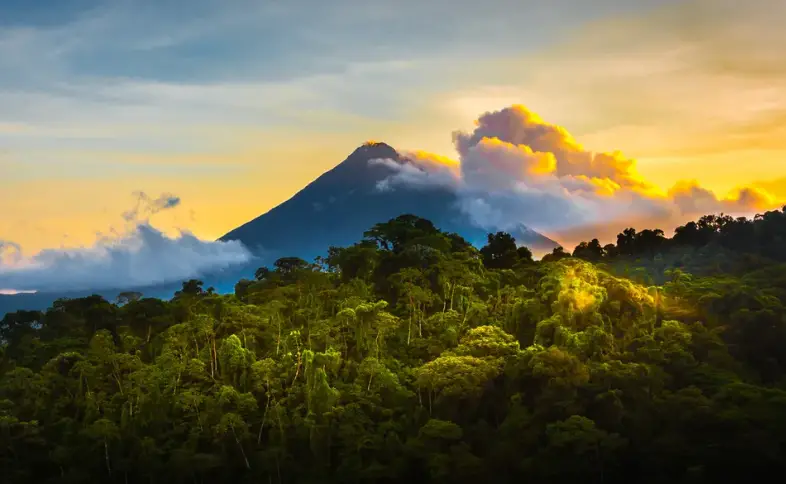Costa Rica is often referred to as the jewel of Central America, and for good reason. With its lush rainforests, stunning beaches, and vibrant wildlife, the country serves as a paradise for nature enthusiasts and adventure seekers alike. A whopping 5% of the world’s biodiversity can be found within its borders, making it a haven for those eager to witness Mother Nature in her most resplendent forms.
However, experiencing the full scope of Costa Rica’s biological richness isn’t as straightforward as merely stepping off a plane. It requires careful planning, responsible travel practices, and a genuine interest in the natural world. So how do you make the most of this natural treasure trove? Let’s delve in.
Planning Your Visit: When and Where to Go
The best time to visit Costa Rica largely depends on what you want to experience. The dry season, running from December to April, offers sun-soaked beaches and clear skies but is also tourist-heavy. The wet season (May to November) is less crowded and more economical but can limit certain outdoor activities.
Your choice of region is equally important. The Osa Peninsula is perfect for witnessing untouched rainforests, while the cloud forests of Monteverde offer a unique, ethereal experience. Arenal is the go-to place for volcanic landscapes, and Tortuguero is renowned for its turtle nesting sites.
Activities to Get Close to Nature
Costa Rica offers myriad ways to get up close and personal with its flora and fauna. Whether you choose hiking, bird-watching, snorkeling, or even zip-lining, there’s something for everyone. Remember to always respect the wildlife and flora; don’t feed animals or pluck plants, and maintain a safe distance.
Guided Tours: Enhance Your Experience
One effective way to enrich your journey is by embarking on a well-curated Costa Rica tour. A knowledgeable guide can provide deeper insights into the ecology, point out elusive wildlife, and share local lore that you’d otherwise miss. Plus, organized tours often include educational components that amplify the significance of the places you visit.
Volunteering: Give Back to Nature
Consider adding a volunteer stint to your itinerary. Organizations like the Corcovado Foundation offer opportunities to engage in meaningful conservation work. From reforestation projects to wildlife monitoring, your efforts can help protect the very biodiversity that drew you to Costa Rica in the first place.
Eco-Friendly Practices: Minimize Your Impact
Costa Rica takes its commitment to the environment seriously, and so should you. Stay in eco-friendly lodges, reduce plastic usage by carrying reusable bottles, and offset your carbon footprint by choosing sustainable transport options. Always follow the ‘Leave No Trace’ principles to ensure you’re not negatively impacting the places you visit.
Local Interaction: Understanding Community Conservation Efforts
Engaging with local communities adds another layer of depth to your experience. In many areas, locals are actively involved in conservation activities, whether it’s turtle watching in Ostional or community-based rural tourism in Santa Juana. Understanding their symbiotic relationship with the land provides invaluable context to the country’s conservation success story.
Capturing Memories: Photograph, Don’t Collect
While it’s tempting to take home a ‘piece’ of Costa Rica, it’s crucial to remember that natural souvenirs like rocks, feathers, or plants can have ecological consequences. Instead, capture your memories through photography or journaling. By doing so, you contribute to preserving the very beauty that captivated you.
How to Handle Wildlife Encounters
Wildlife encounters are awe-inspiring but can be tricky. Always keep a safe distance and never attempt to feed or touch animals. Remember, you’re a visitor in their home. Your respect for their space reflects your respect for Costa Rica’s biodiversity.
Embracing Local Cuisine: A Flavorful Way to Connect
Don’t miss out on the chance to savor Costa Rica’s local cuisine, which is deeply influenced by its biodiversity. From fruits you’ve never heard of to seafood caught fresh off the coast, your taste buds can also partake in the ecological richness. Eating local is another way to support sustainable practices and connect with the land.
Nighttime Adventures: A Different Perspective on Biodiversity
Exploring Costa Rica’s natural wonders doesn’t have to stop when the sun sets. Night walks and nocturnal safaris offer a unique window into a world seldom seen in daylight. From bioluminescent bays to rare nocturnal creatures like the kinkajou, the nighttime unveils a different facet of Costa Rica’s rich biodiversity. It’s an eye-opening experience that highlights the complexity and beauty of the ecosystems that make this country a biological treasure trove.
Conclusion
Embracing the lush tapestry of Costa Rica’s biodiversity is more than just a vacation; it’s an enriching experience that stays with you. From planned tours to spontaneous nighttime safaris, each activity is a note in the grand symphony of life that plays out across this remarkable land. Your respect and conscientious travel practices are your tickets to this spectacular show, ensuring that future generations can also be awestruck by Costa Rica’s natural marvels.






















About Me
Fashion & Beauty Enthusiast
Hi, I'm Fanti. I'm a fashion, beauty, and lifestyle enthusiast, and the ultimate curves queen. Here, I share beauty, fashion, and lifestyle tips to teach, inspire, and give confidence to all women.